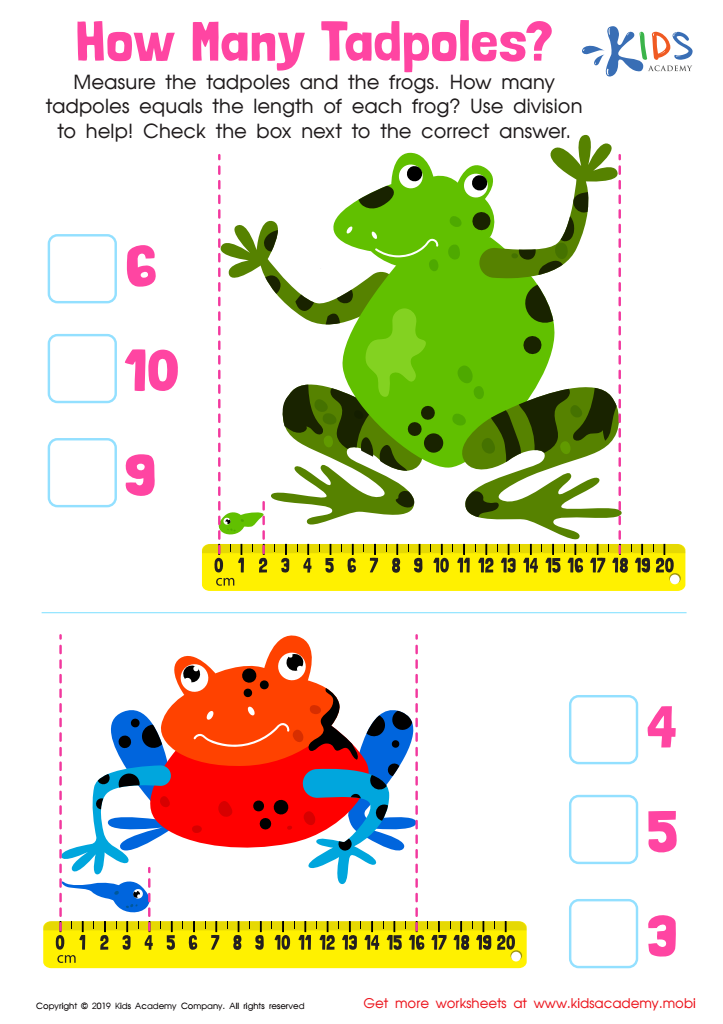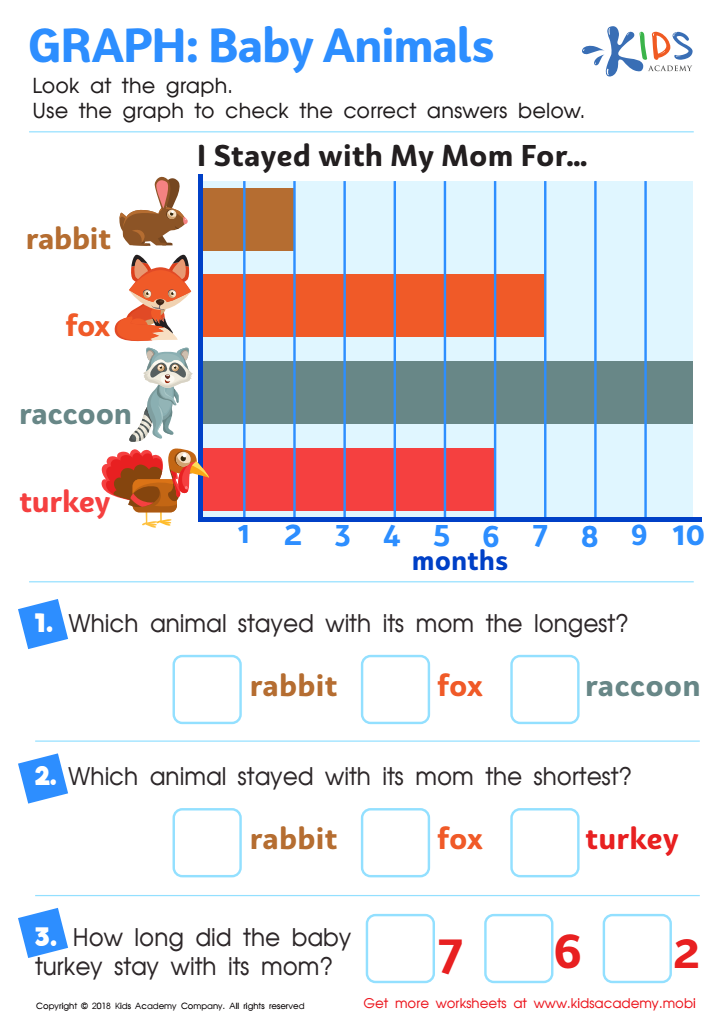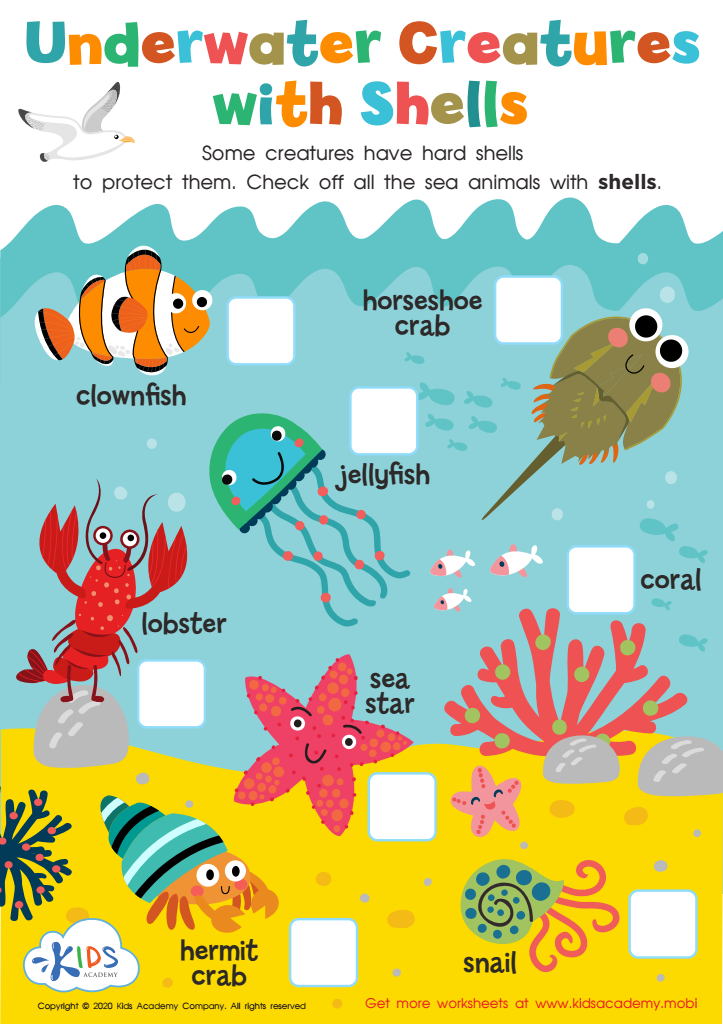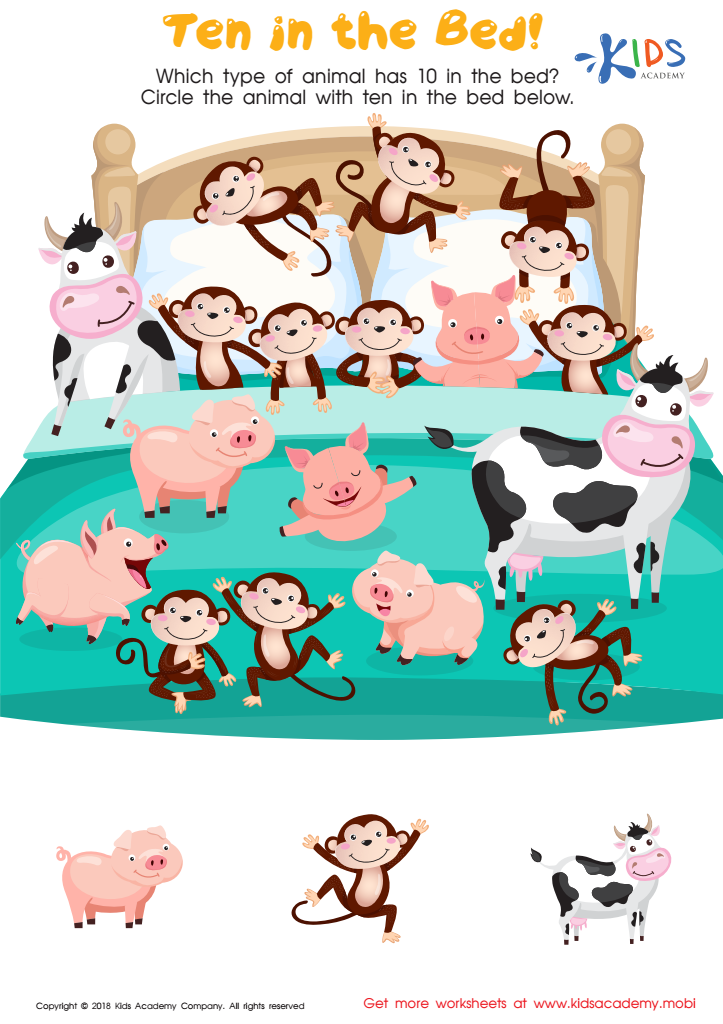Counting skills Normal Plants and Animals Worksheets for Ages 4-9
6 filtered results
-
From - To
Introduce young learners to the fascinating world of plants and animals with our Counting Skills Worksheets designed for ages 4-9! These engaging worksheets blend fun illustrations of various flora and fauna with essential counting exercises, helping children enhance their numeracy skills while exploring nature. From counting leaves to tallying animal features, each activity encourages kids to develop a love for math and the environment simultaneously. Perfect for home or classroom use, our resources are aligned with early learning standards, making them an ideal addition to any educational approach. Start your adventure in counting today and watch your child's confidence grow!


How Many Tadpoles Worksheet


African Wildlife: Giraffe Worksheet


Graph: Baby Animals Worksheet


Underwater Creatures with Shells Worksheet


Ten in the Bed Worksheet


Find 5 Worksheet
Counting skills are foundational for young learners ages 4-9, impacting their mathematical understanding and daily life. For parents and teachers, fostering counting skills through the context of normal plants and animals provides several benefits. First, it enhances children's ability to quantify and categorize objects in their environment. Engaging with familiar subjects like plants and animals makes learning relatable and enjoyable, sparking curiosity.
Moreover, counting activities can help develop critical cognitive skills, such as problem-solving and logical thinking. When children count animals in a storybook or tally the number of plants in a garden, they practice numeracy and improve their observation skills. This not only prepares them for higher math concepts but also reinforces their connections to nature, instilling an appreciation for biodiversity.
Additionally, incorporating counting in everyday exploration promotes social interaction; children can work together, share ideas, and communicate findings, enhancing their social skills. Lastly, strong counting skills at an early age predict future academic success, making early support crucial. Thus, nurturing counting skills tied to plants and animals equips young learners with essential mathematical foundations while fostering a deeper understanding of the world around them.
 Assign to My Students
Assign to My Students














